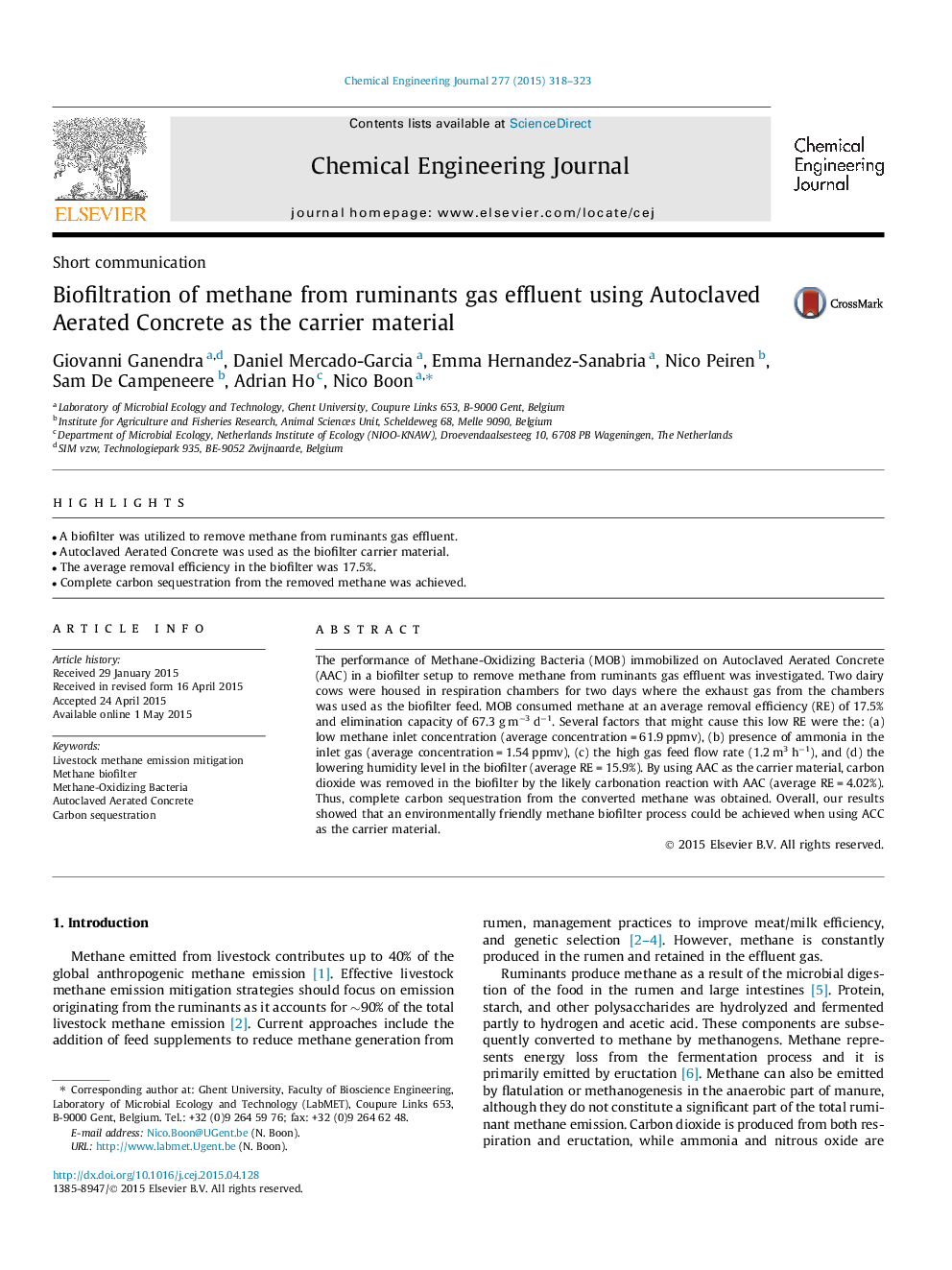| Article ID | Journal | Published Year | Pages | File Type |
|---|---|---|---|---|
| 146344 | Chemical Engineering Journal | 2015 | 6 Pages |
•A biofilter was utilized to remove methane from ruminants gas effluent.•Autoclaved Aerated Concrete was used as the biofilter carrier material.•The average removal efficiency in the biofilter was 17.5%.•Complete carbon sequestration from the removed methane was achieved.
The performance of Methane-Oxidizing Bacteria (MOB) immobilized on Autoclaved Aerated Concrete (AAC) in a biofilter setup to remove methane from ruminants gas effluent was investigated. Two dairy cows were housed in respiration chambers for two days where the exhaust gas from the chambers was used as the biofilter feed. MOB consumed methane at an average removal efficiency (RE) of 17.5% and elimination capacity of 67.3 g m−3 d−1. Several factors that might cause this low RE were the: (a) low methane inlet concentration (average concentration = 61.9 ppmv), (b) presence of ammonia in the inlet gas (average concentration = 1.54 ppmv), (c) the high gas feed flow rate (1.2 m3 h−1), and (d) the lowering humidity level in the biofilter (average RE = 15.9%). By using AAC as the carrier material, carbon dioxide was removed in the biofilter by the likely carbonation reaction with AAC (average RE = 4.02%). Thus, complete carbon sequestration from the converted methane was obtained. Overall, our results showed that an environmentally friendly methane biofilter process could be achieved when using ACC as the carrier material.
